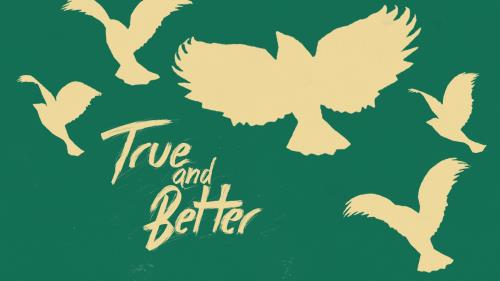-
A Home Provided For Man Series
Contributed by John Lowe on May 25, 2018 (message contributor)
Summary: God prepared the earth for the man. The garden where He placed the man was designed to be his home, and it was apparently lush and perfect. This original habitat was a delightful shelter, containing everything the man needed.
June 28, 2013
Commentary on the Book of Genesis
By: Tom Lowe
Lesson I.B.1: A Home Provided for Man.
Scripture: Gen. 2.8-14
Gen. 2.8-14. (KJV)
8 And the LORD God planted a garden eastward in Eden; and there he put the man whom he had formed.
9 And out of the ground made the LORD God to grow every tree that is pleasant to the sight, and good for food; the tree of life also in the midst of the garden, and the tree of knowledge of good and evil.
10 And a river went out of Eden to water the garden; and from thence it was parted, and became into four heads.
11 The name of the first is Pison: that is it which compasseth the whole land of Havilah, where there is gold;
12 And the gold of that land is good: there is bdellium and the onyx stone.
13 And the name of the second river is Gihon: the same is it that compasseth the whole land of Ethiopia.
14 And the name of the third river is Hiddekel: that is it which goeth toward the east of Assyria. And the fourth river is Euphrates.
Commentary
8 And the LORD God planted a garden eastward in Eden; and there he put the man whom he had formed.
God prepared the earth for the man. The garden where He placed the man was designed to be his home, and it was apparently lush and perfect. This original habitat was a delightful shelter, containing everything the man needed: food (v. 9), beauty (v. 9), water (v. 10), fellowship with God (v. 16; see also Gen. 3:8), and human companionship (Gen. 2:22–25). Although the word ?Eden signifies pleasure or delight, it is certainly the name of a place which is mentioned in several places in the Bible—Genesis 4:16; 2 Kings 19:12; Isaiah 37:12; Ezekiel 27:23; Amos 1:5. In several Old Testament passages Eden is used as a symbol of beauty and fruitfulness, the place blessed by God (Is. 51:3). Revelation 22:1–2 alludes to the Garden of Eden by picturing a “river of water of life” and “the tree of life” in the heavenly Jerusalem.
In the Septuagint this verse has been rendered in a very picturesque way: “God planted a paradise in Eden.” I cannot tell you where the Garden of Eden is. I am sure it is somewhere in the Tigris–Euphrates Valley; in fact it may be the entire valley. Originally, that valley was a very fertile place, and it still is, for that matter. It is part of “the fertile crescent.” At one time, the people inhabiting that region did not even plant grain there; they simply harvested it, since it grew by itself. It is probable that this area will someday become the very center of the earth again. Some of the suggestions offered for the location of Eden include Babylonia (in Mesopotamia), Armenia (north of Mesopotamia), and an island in the Indian Ocean. The statement in Genesis 2:10 that four “riverheads” divided from the river that flowed out of the Garden of Eden (Gen. 2:10–14) support a location somewhere in Mesopotamia. Two of the rivers are clearly identified: the TIGRIS, which ran along the east side of Asshur (Assyria), and the EUPHRATES. The Pishon (“Spouter”) and Gihon (“Gusher”) rivers are hard to identify. The Gihon may have been in Mesopotamia, since Genesis 2:13 says it encompassed the whole land of “Cush” (possibly southeast Mesopotamia). Some think Pishon and Gihon represent the Indus and the Nile, respectively, suggesting that Eden included the whole of the Fertile Crescent from India to Egypt.
The Garden of Eden represented God’s ideal environment for man. Some of the special characteristics of Eden were its wide variety of trees (Gen. 2:9; Ezek. 31:8–9), its precious stones and metals (Gen. 2:11–12; Ezek. 28:13–14), and its rivers (Gen. 2:10–14; Rev. 22:1–2), all of them give a picture of its richness and fertility. Eden is also sometimes referred to in the Bible as the garden of the Lord (Gen. 13:10; Is. 51:3) or the garden of God (Ezek. 28:13; 31:8–9).
The Garden of Eden included many kinds of beautiful and fruit bearing trees, including “the tree of life” and “the tree of the knowledge of good and evil” (Gen. 2:9). Man was to tend and keep the garden (Gen. 2:15), which, in addition to trees, could have contained other vegetation such as grain crops and vegetables (Gen. 1:11–12). The garden was also filled with all kinds of birds and land animals (Gen. 2:19–20), probably including many of the animals created on the sixth day of creation (Gen. 1:24–25). It was well-watered (Gen. 2:10), insuring lush vegetation and pasture. After Adam and Eve sinned against God (Gen. 3:1–19), the Lord banished them from the garden. Cain, the son of Adam and Eve, is said to have lived “east of Eden” (Gen. 4:16).

 Sermon Central
Sermon Central



